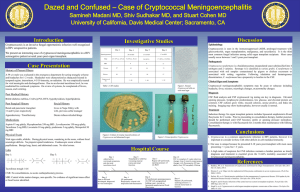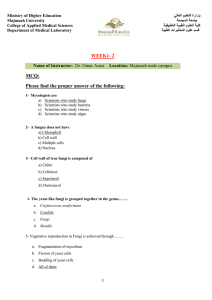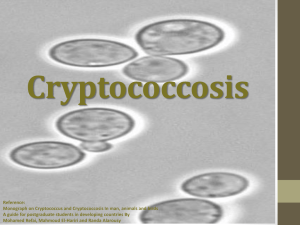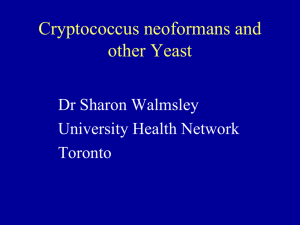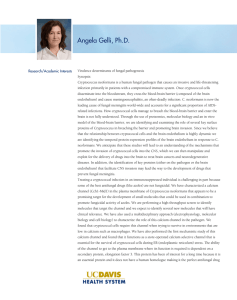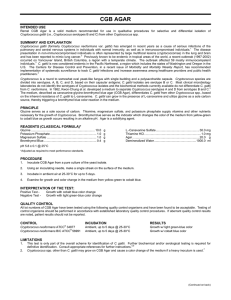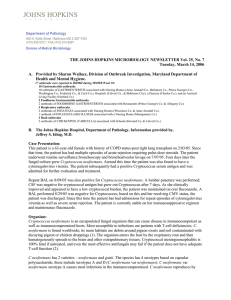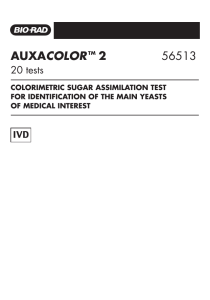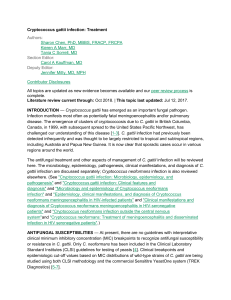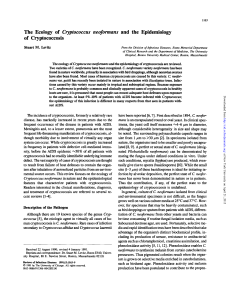questions week 7
advertisement
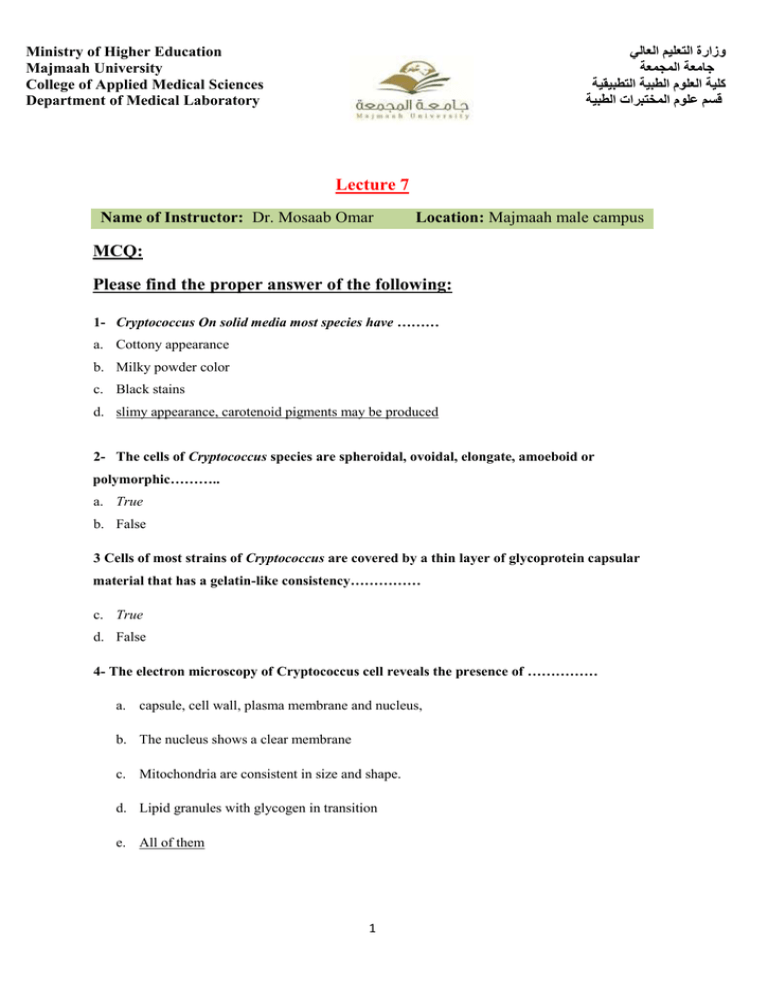
وزارة التعليم العالي جامعة المجمعة كلية العلوم الطبية التطبيقية قسم علوم المختبرات الطبية Ministry of Higher Education Majmaah University College of Applied Medical Sciences Department of Medical Laboratory Lecture 7 Name of Instructor: Dr. Mosaab Omar Location: Majmaah male campus MCQ: Please find the proper answer of the following: 1- Cryptococcus On solid media most species have ……… a. Cottony appearance b. Milky powder color c. Black stains d. slimy appearance, carotenoid pigments may be produced 2- The cells of Cryptococcus species are spheroidal, ovoidal, elongate, amoeboid or polymorphic……….. a. True b. False 3 Cells of most strains of Cryptococcus are covered by a thin layer of glycoprotein capsular material that has a gelatin-like consistency…………… c. True d. False 4- The electron microscopy of Cryptococcus cell reveals the presence of …………… a. capsule, cell wall, plasma membrane and nucleus, b. The nucleus shows a clear membrane c. Mitochondria are consistent in size and shape. d. Lipid granules with glycogen in transition e. All of them 1 5- Biochemical characteristics of Cryptococcus species …………… a. Unable to ferment sugars, but do assimilate different sugars, inositol and produce urease. b. Able to ferment sugars c. Unable to assimilate Inositol d. None of them 6- Virulent isolates of Cryptococcus must be able to…………………….. a. produce small particles that can get into the alveolar spaces, b. Grow at 37oC at a pH of 7.3 to 7.4 in an atmosphere of approximately 5% CO2 c. Have the ability to produce a large capsule and shed great amounts of capsular material into the body fluids makes the organism highly virulent. d. All of them 7- The following statements are complies with: Emmons (1952) was the first one who isolated C. neoformans from the pigeon droppings after an outbreak occurred in New York squares. Inhalation is the most common mode of transmission. Incubation period is unknown. Person-to-person transmission has not been documented other than through transplanted organs. Host range: humans and various domestic and wild animals.……………….. a. Cryptococcus Epidemiology b. Cryptococcus Pathogenesis c. Cryptococcus diagnosis d. Cryptococcus Treatment 8- Cryptococcosis in man causes many severe diseases like……………….. a. Pulmonary Cryptococcosis b. Meningoencephalitis c. Meningitis d. All of them 9- Diagnosis of cryptococcosis can done by…………………. a. Cutaneous lesions: biopsy with fungal stains and cultures 2 b. Blood: fungal culture, cryptococcal serology, cryptococcal antigen testing and molecular biological assays. c. Cerebrospinal fluid: India ink smear, fungal culture, cryptococcal antigen testing and molecular biological assays. d. Urine and sputum: cultures, even if renal or pulmonary disease is not clinically evident. 3

